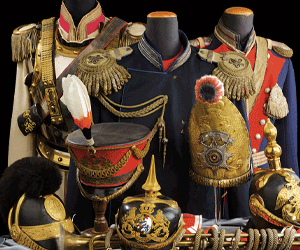German Red Cross Officer's Visor Cap
SKU: 70.GOR.01.01.002
Estimated market value:


Estimated market value:
Attributes
History
Following the First World War, the German Red Cross (Deutsches Rotes Kreuz, DRK) was threatened in its existence by the Treaty of Versailles, since the organisation was mainly focused on preparing its members for war and military-related medical service. This resulted in the DRK switching focus to social welfare activities during the time of the Weimar Republic.
The stipulations enforced by the Treaty of Versailles were declared null and void following the NSDAP’s consolidation of power in 1933. The new Reich Minister of the Interior, Wilhelm Frick, an NSDAP member, ensured that the DRK would be ready to support all of the Third Reich’s future military affairs and political ideologies. In 1938, the DRK was merged with the Ministry of the Interior’s Social Welfare Organisation, officially becoming an organisation under NSDAP oversight. The DRK also had ties to the SS, mainly due to high-ranking medical professionals serving in both organisations simultaneously.
The design of the DRK Visor Cap was a continuation of the form used during the First World War and the Weimar Republic. New regulations concerning the DRK uniforms were introduced in 1935 and 1938, and they altered the design of the uniform garments.
The DRK Visor Cap has a “saddle” form, and it was worn by all DRK personnel as part of their service uniform.
Each cap is adorned with a DRK national eagle emblem along the front seam above the cap band, and a national tricolour cockade in the centre of the cap band surrounded by an oak leaf wreath. The national eagle emblem has two main versions, the early version utilized prior to 1938, and the later version used from 1938 to 1945. Both versions of the insignia feature the DRK eagle standing on a red cross, but the early version features a larger red cross and a smaller eagle standing on the topmost cross arm, while the later version, post-1938, has a smaller red cross and a larger eagle with its legs spread onto the left and right cross arms.
The cloth top is composed of a light-grey woolen material, but is also, very rarely, known to have been produced in a white top version for summer wear. The cap band is made of darker grey material. For higher ranks, such as Generals and Officers, a higher quality of the material was used in the construction of the cap, such as gabardine.
The chin cords and buttons are generally silver-coloured, but for General ranks, the fittings are gold-coloured (gilt), and enlisted men have a chin strap composed of black leather. The piping is located along the cloth top seam and along the top and bottom of the cap band. It is light-grey coloured for all ranks except Generals. The piping on the caps for Generals is gold-coloured.
The cap is also referred to as the Field Service Visor Cap.


Comments
Sign in to comment and reply.


Scroll Top